Invisalign – New York, NY
A Clear Alternative to Traditional Braces
If you’ve been longing for a straighter smile but don’t want to deal with the hassle of having metal brackets on your teeth, our team at FSU Dental Arts can help. Invisalign is a clear alternative to traditional braces and is customized to fit over your teeth to gently reposition them over a designated period. This solution has gained popularity because it is less visually obtrusive than standard braces. Plus, cleaning your teeth is a breeze because you can simply remove the plastic aligners to brush and floss then reinsert them when you’re done. If you’d like to know more or have additional questions, you’re welcome to contact our team today for information!
Why Choose FS Dental Arts For Invisalign?
- Flexible Financing Available
- Happy to Treat Children & Adults Alike
- Digital Imaging for Beautiful & Accurate Results
How Invisalign Works
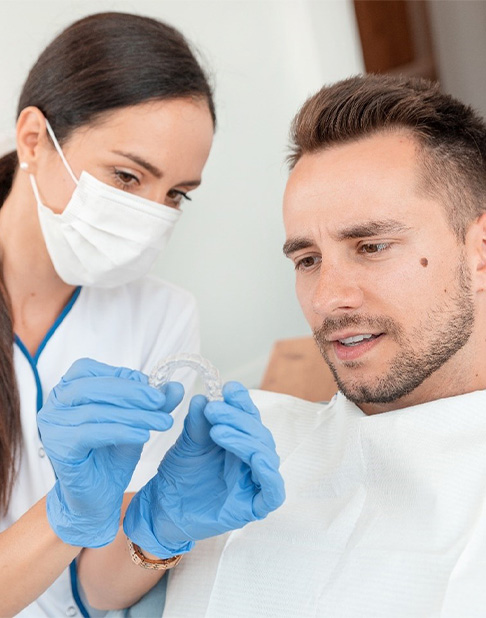
Invisalign relies on clear plastic aligner trays rather than metal brackets, wires, and bands to fix misaligned teeth. These aligners use targeted pressure to gently guide teeth into healthier positions. Your treatment plan is tailored to your individual needs and takes into account the current position of your teeth as well as your bite alignment and key pressure points. You’ll wear these aligners for 22 hours every day and will receive a new set of aligners every two weeks or so to account for the recent movement and continue forward progress. It usually takes around 12-18 months to complete treatment, as opposed to several years with traditional braces.
Who Can Invisalign Help?
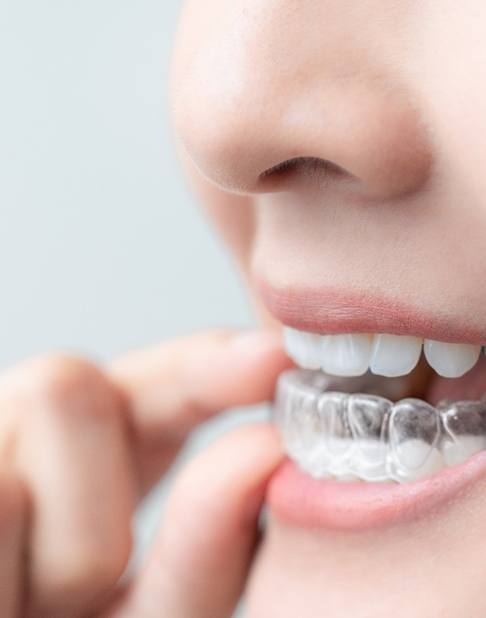
If you're considering Invisalign to enhance your smile, you're on the right track. It is a popular and effective treatment, but before we can determine whether it’s right for you, you must consult with our expert, Dr. Sanchez. She will examine your mouth and provide a professional recommendation based on your unique situation. Read on to discover some common issues that Invisalign can effectively address. Feel free to contact us for more information or to schedule an appointment.
Crowded Teeth
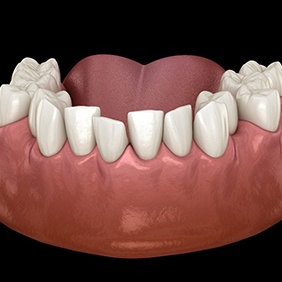
Young adults aren’t the only ones who suffer from overcrowded teeth. As you age, they tend to shift due to the ongoing tension exerted whenever you bite and chew. When they’re pressed closely together, it’s harder to reach all their surfaces to thoroughly brush and floss them. You’re unfortunately more vulnerable to tooth decay and gum disease as a result.
Invisalign can shift your teeth to their ideal placements to simultaneously enhance both your appearance and your oral health.
Gaps Between Teeth
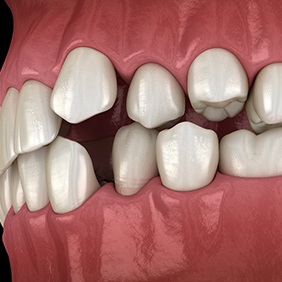
Gaps in your grin can leave you feeling self-conscious, whether due to natural bone development, teeth that are too small, or having a larger jawbone. They’re also more likely to cause food to become trapped between your pearly whites. This can irritate your gums and attract germs that cause plaque buildup and lead to dental issues. You could have gum disease or bad breath as a result.
Fortunately, clear aligners can gently close the spaces for an evenly balanced smile that’s less likely to capture any leftovers.
Overbite
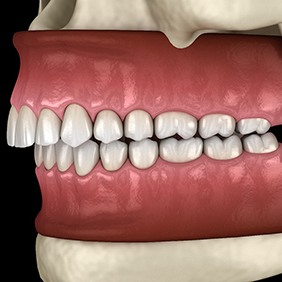
An overbite is a condition in which the top arch of teeth sticks out too far from the lower set. This can cause challenges enunciating certain sounds, unevenly worn enamel, and jaw pain or tension. You might even develop a stiff or locked jaw.
Dr. Sanchez can use Invisalign to adjust your bite, which can resolve these issues and improve your dental condition.
Underbite
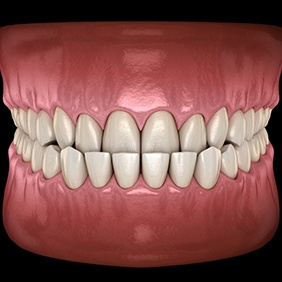
People with an underbite have bottom teeth that either match the top set or extend past them when they close their mouths. This can occur in children who have a habit of sucking on their thumb or pacifier but can also result from genetics or an injury. This can increase the risk of sleep apnea because it can restrict your airway when lying down at night.
Using rubber bands and other attachments in conjunction with your Invisalign, Dr. Sanchez can gradually pull your lower arch back into its rightful place.
Crossbite
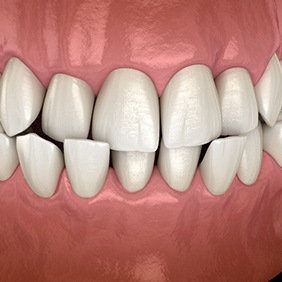
If your upper teeth fit inside your lower ones when you close your mouth, then you might have a crossbite. It can be caused by genetics, premature loss of baby teeth, or poor oral hygiene habits. If left unaddressed, it can lead to an enhanced risk of tooth decay, gum disease, headaches, and jaw pain, in addition to denting your self-confidence.
Invisalign, combined with elastics and other accessories, can often remedy this problem.
Open Bite
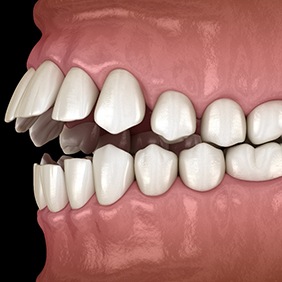
This condition happens when your bottom front teeth don’t touch or overlap in any way when you shut your jaw. It’s usually a product of poor bone development or prolonged thumb sucking. It can cause challenges when speaking, as well as excessively wearing down the enamel on your back teeth, which increases the likelihood of cavities.
By bringing your top and bottom teeth together, Invisalign can reduce the risk of potentially uneven wear and tear.
Benefits of Invisalign
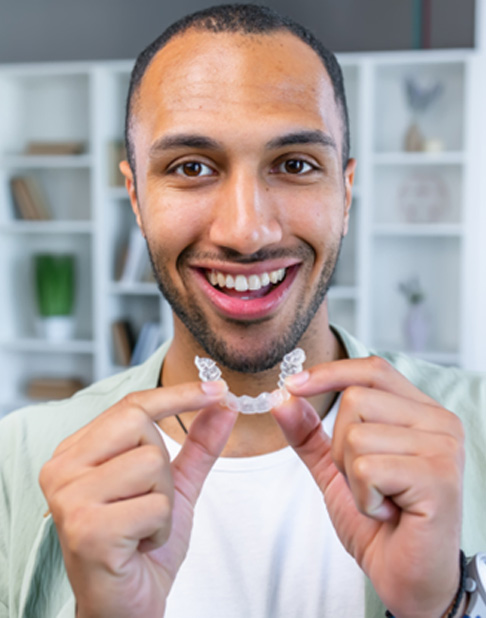
Invisalign is becoming an increasingly popular option for creating straighter smiles. Many patients prefer this treatment over traditional braces, and it’s not hard to see why when you think about the unique advantages that removable clear aligners can provide. Read on to learn more about the many benefits that can make Invisalign an orthodontic option well worth pursuing.
Visual Appeal
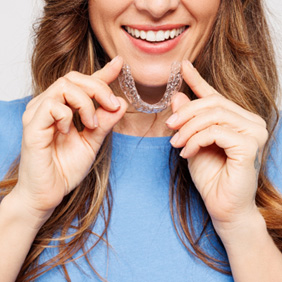
If you’re worried about the appearance of your smile, the discreet nature of Invisalign can make it a very attractive choice. Most people won’t even notice the aligners, so there’s less of a chance of attention being drawn to your smile for the wrong reasons. On top of that, without any metal brackets and wires to get in the way, you’ll be able to get a clear look at your teeth as they gradually move toward their ideal positions, bringing you closer to the straighter smile of your dreams.
Shortened Treatment Time
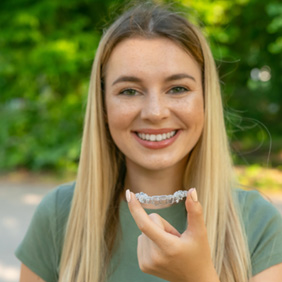
You may have heard that traditional braces often need to be worn for a few years. With Invisalign, this typically isn’t the case. The exact length of the treatment isn’t the same for every patient, but on average, it usually only takes around 12 to 18 months for Invisalign to yield results.
More Convenient Cleaning
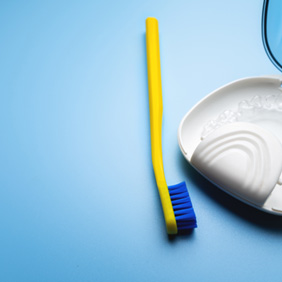
The fact that Invisalign aligners can be taken out of your mouth at any time can make things much simpler when it comes to maintaining them. You’ll be able to easily clean every surface of your aligners in order to keep them in excellent condition. Furthermore, you’ll have the freedom to brush and floss your teeth like you normally would without any brackets or wires getting in the way.
No Dietary Restrictions

One of the more notable downsides of traditional braces is the fact that they can significantly limit your diet. For example, you will need to stay away from crunchy foods that could damage your brackets and wires. But this isn’t a concern with Invisalign because you can simply store your aligners in a protective case while you enjoy your meal. As a result, you will be able to eat all of your favorite foods without having to worry about disrupting the orthodontic process.
Improved Comfort
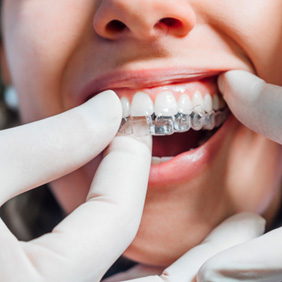
If you don’t like the idea of metal brackets rubbing against the inside of your cheeks, Invisalign can be a more comfortable alternative. The aligners are made of smooth plastic, making them unlikely to cause soft tissue irritation or sores.
Fewer Follow-Up Appointments
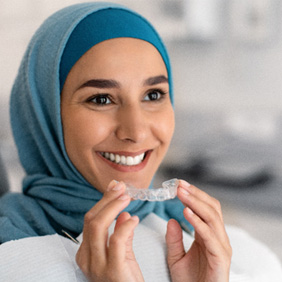
Compared to traditional braces, Invisalign doesn’t require as many appointments. You’ll only need to return to our office every six or eight weeks so that we can make sure there aren’t any unexpected developments and provide you with the next set of aligners. This can be good news for patients with hectic schedules.
Living with Invisalign Aligners
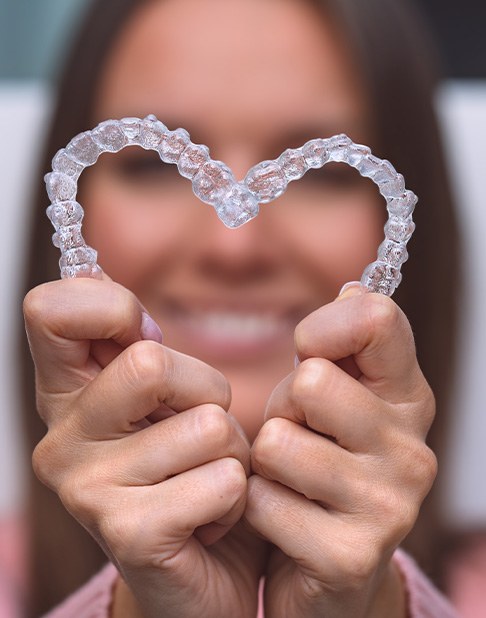
Invisalign continues to gain popularity as a clear alternative to traditional braces because, instead of relying on bulky metal brackets and wires, this system utilizes transparent plastic trays. The smooth material allows your natural enamel to shine through and is typically considered both more comfortable and discreet.
However, it’s essential to understand what life looks like with clear aligners so you can make an informed decision regarding enhancing your appearance. Continue reading to learn more about what to expect from daily life during this treatment!
Wearing Your Trays

Invisalign is carefully customized to fit snugly over your arches to exert enough consistent but gentle pressure to shift your teeth to their ideal positions over a designated period. But you must wear your trays for 20 to 22 hours daily to prevent them from reverting to their starting places. That means you should ideally only remove them for meals and cleanings.
Then, after a week or two, you’ll be asked to start wearing the next set in your series, which has slightly different dimensions, so your teeth continue to move at the anticipated rate.
Cleaning Your Aligners

These plastic aligners cover your teeth and gums for most of the day and night, giving harmful bacteria ample time to thrive. This can cause plaque to form on the surface of your aligners, increasing the likelihood of developing dental concerns, such as cavities or gum disease.
To prevent this, you should remove your trays morning and night to scrub all sides with a soft-bristle toothbrush and clear dish soap that won’t abrade the material. Then, be sure to brush and floss your teeth, too, before rinsing off your Invisalign and reinserting it.
Eating & Drinking
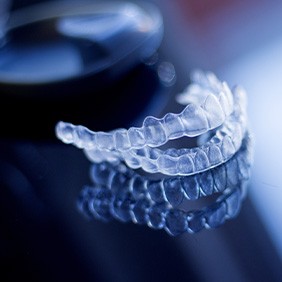
There are no dietary restrictions for patients who choose this treatment because the trays are completely removable. That means you can enjoy a wide variety of wholesome foods to support your oral and overall health.
With that said, please avoid eating or drinking anything other than cool or lukewarm water with them in your mouth. If you try to bite or chew food with them in place, you could crack or break them. Furthermore, hot temperatures might warp the plastic, so they no longer fit correctly. Finally, drinking coffee or tea with them in your mouth can stain the surface, so you may want to minimize your consumption.
Losing or Damaging a Tray
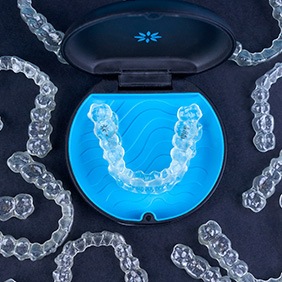
Are you concerned about what happens if one of your aligners is lost or broken? It’s not the end of the world, but it’s important to contact our team in New York City to let us know what happened so we can provide proper instructions moving forward.
For example, depending on how long you wore the trays, we might ask you to switch to a previous set while we reorder them. But if you were nearing the end of your wear time with the damaged aligners, it might be better to start wearing the next set earlier than anticipated.
Routine Check-Ins
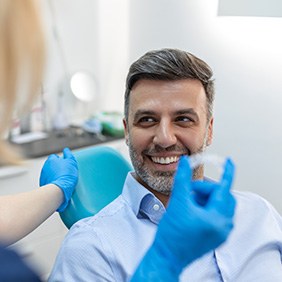
You’ll be expected to attend routine follow-up visits every four to eight weeks to allow us to monitor your progress and provide the next aligners in your series. These appointments tend to be brief and might only last about 15 to 30 minutes. This gives our team enough time to ensure you’re still on track with your treatment timeline.
Understanding the Cost of Invisalign
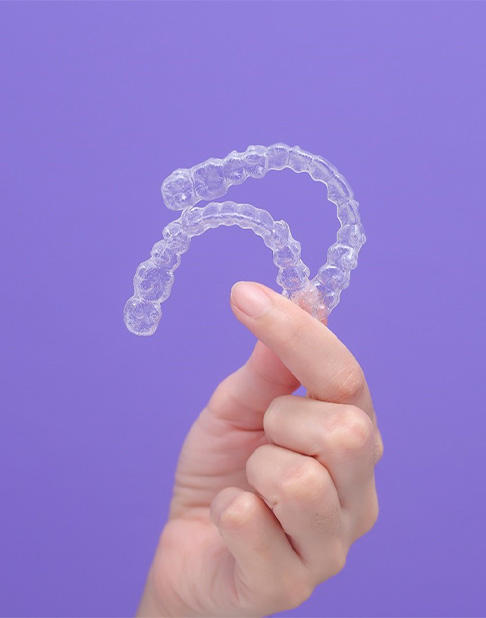
There’s a common assumption that Invisalign is the same price for everyone. That’s not the case! Several factors are considered when calculating the cost for your Invisalign treatment, and everyone’s circumstances are unique. The good news is that we can provide you with an estimate of the cost at your consultation, and we can review the financial options available so there isn’t any stress on your wallet. Until then, you can read on to learn more on the topic of price!
Factors That Affect the Cost of Invisalign
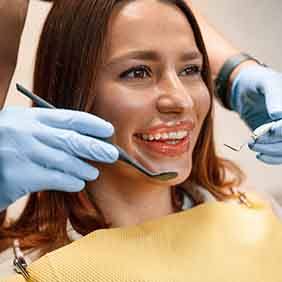
At your consultation, our team will examine your current dental condition, chat with you about your goals, and closely review your medical history. With this information, we can determine:
- The complexity of your case
- If any restorative treatments are needed
- How many clear aligners need to be made
- If single-arch treatment is possible
- If rubber bands and other orthodontic accessories are necessary
- The type of retainer needed
Are Mail-In Aligners Cheaper Than Invisalign?
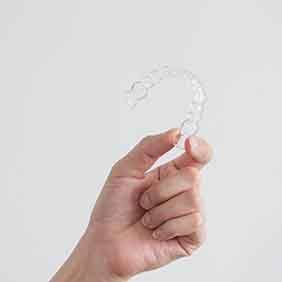
Mail-in aligners are usually cheaper than Invisalign. Before you let that make up your mind, it’s important to ask an important question: Why? The answer is that alternatives like these bypass the initial consultation, they rely on DIY impressions, they usually aren’t supervised by licensed dental professionals, and there often isn’t anywhere to turn if something goes wrong. So, even if Invisalign requires a higher upfront investment, it’s well worth it.
Does Dental Insurance Cover Invisalign?

Many dental patients have 100% of preventive care covered and between 50% and 80% of restorative treatments covered. However, it’s worth taking a look at your plan to see if you have any other benefits, like a once-in-a-lifetime orthodontic benefit. This might include Invisalign, so it’s worth reading through the fine print and calling your provider with any questions you have. You’re more than welcome to ask us for help too since we are in-network with several major dental insurance companies.
Options for Making Invisalign Affordable

Don’t have dental insurance at the moment? Good news: our team at FS Dental Arts also welcomes CareCredit! As a result, you can space out your payments into smaller, more manageable monthly chunks instead of paying for the entire cost at once. If you want to learn more details, you’re welcome to reach out to us with any questions you have – we’re here to help ensure that your budget doesn’t keep you from having the perfectly straight smile that you deserve!
Invisalign FAQs
How Long Does Invisalign Take?
The average treatment timeline with Invisalign is only 12-18 months! Of course, your treatment plan may be shorter or longer than that. It really depends on the complexity of your case and how well you follow the guidelines provided, like wearing your aligners for 20+ hours a day and switching to each new set in the series on the correct day.
Does Invisalign Hurt?
While some soreness is expected as your teeth begin to move, the vast majority of patients report that Invisalign does not hurt (especially compared to traditional braces). This is largely because there aren’t any metal components or adjustment appointments. Instead, a series of smooth, custom-made aligners gradually align your teeth and bite, which makes the treatment process considerably more comfortable.
Can I Drink Coffee with Invisalign?
Do you love starting your morning with a fresh cup of coffee? Maybe you prefer picking up a latte from a local café in the afternoon. Whatever the case may be, you don’t have to worry – you don’t have to give up coffee during your Invisalign treatment. You do, however, need to remove your aligners beforehand. Not only will this help prevent stubborn stains from surfacing, but it will also reduce your risk of tooth decay.
How Should I Clean My Aligners?
Let’s start with what you should NOT do: do not use bleach, mouthwash, or toothpaste to clean your aligners. Instead, use a damp, soft-bristled toothbrush and clear, mild dishwashing liquid to remove saliva, food particles, and plaque from the surface. Then, rinse them with cool or room-temperature water and put them back on (after brushing, flossing, and rinsing with mouthwash, of course).
Tip: Having trouble keeping your aligners clean and clear? Use the cleaning crystals that came in your welcome kit!
What Happens After Invisalign?
Once your teeth and bite are in their ideal positions, we will shift our focus to keeping them there. This is crucial because upwards of 50% of patients experience orthodontic relapse in the years following their time with braces. To prevent that from happening, we will have a custom retainer made, which you will wear each night while you sleep.
Is There Anything I Can’t Eat with Invisalign?
One of the many perks of this smile-enhancing treatment is that the aligners are removable. As a result, you don’t need to abide by a long list of dietary restrictions! Just do your best to avoid cavity-causing and enamel-breaking foods, like taffy and hard pretzels. Simultaneously, focus on incorporating smile-friendly ones into your diet, like cottage cheese, plain yogurt, bananas, and oatmeal.
